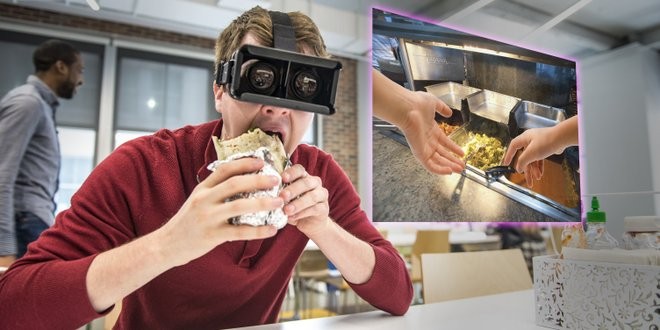The future of virtual reality looks very bright, thanks to large-scale research and development efforts, with work on introducing the senses of taste and smell being identified as the next big challenge.
Over the years, the fantasy of experiencing the smell of a tasty dish seen in a movie or on a cooking show has occupied the minds of many of us growing up. But what if something like a 21st century translation of smell-o-vision could actually be achieved?
Some researchers are beginning to shift the limits as well as traditional concepts behind virtual reality (VR), which overwhelmingly focus on enhancing experiences related to sound and sight. Though the advancements in haptics-supported technology are undeniable, two exciting new areas of VR-development—those that stimulate smell and taste receptors—are also experiencing great interest and generating an important body of research.
The senses of taste and smell being identified as the next big challenge.
Over the years, the fantasy of experiencing the smell of a tasty dish seen in a movie or on a cooking show has occupied the minds of many of us growing up. But what if something like a 21st century translation of smell-o-vision could actually be achieved?
Some researchers are beginning to shift the limits as well as traditional concepts behind virtual reality (VR), which overwhelmingly focus on enhancing experiences related to sound and sight. Though the advancements in haptics-supported technology are undeniable, two exciting new areas of VR-development—those that stimulate smell and taste receptors—are also experiencing great interest and generating an important body of research.
Benjy Li, Stanford University Postdoctoral Researcher who works with the university’s Virtual Human Interaction Lab, sizes up the situation: “Sight and sound have been the staple of VR environments,” elaborating on future developments, “Haptic feedback is starting to allow for basic touch, but the next radical evolution in VR could actually come via your nose (and/or mouth).”
Contraptions that seek to add olfactory stimuli to VR experiences, in a more nuanced way, have been popping up more and more in recent years. The Japan-based Nakamoto Laboratory developed a “palm-sized olfactory display” called the Oculus Rift. Though a bit cumbersome to put on, the gear fits snuggly just over the bridge of the nose, leaving the lower half of the face exposed. It works by bombarding atomized liquids with acoustic waves, and in this way the unpleasant smells travel up to your nose.













